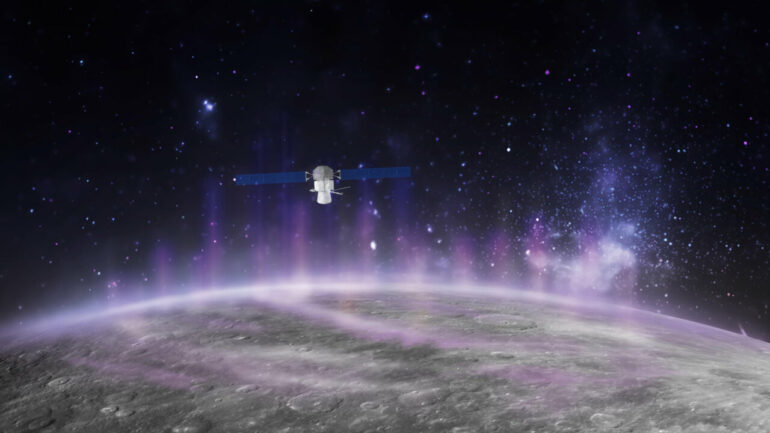BepiColombo, the joint European Space Agency (ESA) and Japanese Aerospace Exploration Agency (JAXA) mission, has revealed how electrons raining down onto the surface of Mercury can trigger high-energy auroras.
The mission, which has been enroute to the solar system’s innermost planet since 2018, successfully carried out its first Mercury flyby on October 1, 2021. An international team of researchers analyzed data from three of BepiColombo’s instruments during the encounter. The outcomes of this study have been published in Nature Communications.
Terrestrial auroras are generated by interactions between the solar wind, a stream of charged particles emitted by the sun, and an electrically charged upper layer of Earth’s atmosphere, called the ionosphere. As Mercury only has a very thin atmosphere, called an exosphere, its auroras are generated by the solar wind interacting directly with the planet’s surface.
The BepiColombo mission consists of two spacecraft, the Mercury Planetary Orbiter (MPO) led by ESA, and the Mercury Magnetospheric Orbiter (MMO, named Mio after launch) led by JAXA, which are currently in a docked configuration for the seven-year cruise to the final orbit. During its first Mercury flyby, Bepicolombo swooped just 200 kilometers above the planet’s surface. The observations by plasma instruments onboard Mio enabled the first simultaneous observations of different kinds of charged particles from the solar wind in the vicinity of Mercury.
Lead author, Sae Aizawa, of the Institut de Recherche en Astrophysique et Planétologie (IRAP), now at JAXA’s Institute of Space and Astronautical Science (ISAS) and University of Pisa, Italy, said, “For the first time, we have witnessed how electrons are accelerated in Mercury’s magnetosphere and precipitated onto the planet’s surface. While Mercury’s magnetosphere is much smaller than Earth’s and has a different structure and dynamics, we have confirmation that the mechanism that generates aurorae is the same throughout the solar system.”
During the flyby, BepiColombo approached Mercury from the night side of the northern hemisphere and made its closest approach near the morning side of the southern hemisphere. It observed the magnetosphere on the daytime side of the southern hemisphere, and then passed out of the magnetosphere back into the solar wind. Its instruments successfully observed the structure and the boundaries of the magnetosphere, including the magnetopause and bow shock. The data also showed that the magnetosphere was in an unusually compressed state, most likely due to high pressure conditions in the solar wind.
The acceleration of electrons appears to occur due to plasma processes in the dawn side of Mercury’s magnetosphere. The high energy electrons are transported from the tail region towards the planet, where they eventually rain down on the Mercury’s surface. Unimpeded by an atmosphere, they interact with material on the surface and cause X-rays to be emitted, resulting in an auroral glow. Although auroras had been observed before at Mercury by the NASA MESSENGER mission, the processes triggering the X-ray fluorescence by the surface had not been well understood and witnessed directly to date.
More information:
Sae Aizawa, Direct evidence of substorm-related impulsive injections of electrons at Mercury, Nature Communications (2023). DOI: 10.1038/s41467-023-39565-4. www.nature.com/articles/s41467-023-39565-4
Citation:
First BepiColombo flyby of Mercury finds electron rain triggers X-ray auroras (2023, July 18)
